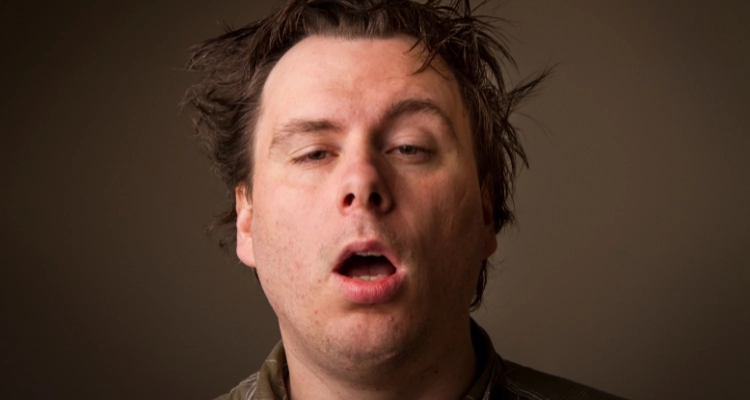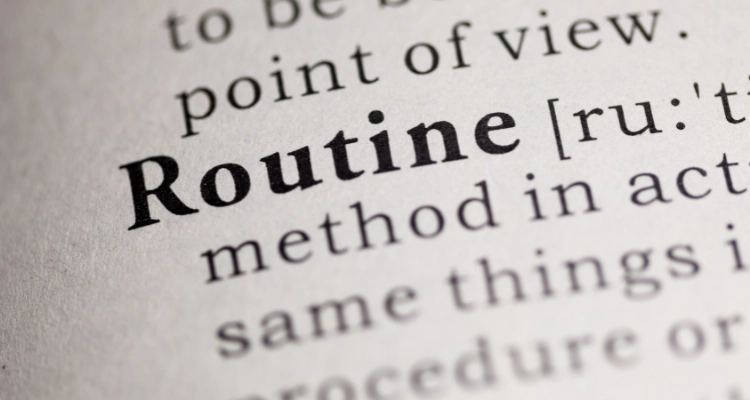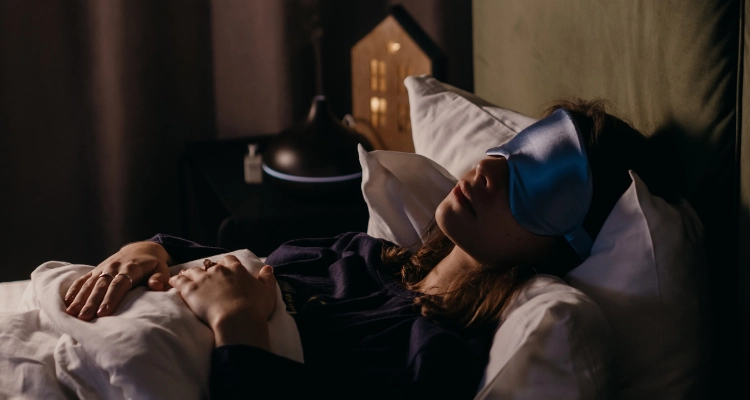ou’re Not Lazy—You’re Exhausted (and You’re Not Alone)
Did you know that 1 in 3 American adults struggles with falling or staying asleep at least one night a week?
If you’re reading this, chances are you’ve been there: lying in bed, exhausted but wired, replaying awkward conversations
or scrolling mindlessly at 2 a.m., knowing full well you’ll regret it in the morning.
Let’s get something straight—you’re not lazy. You’re exhausted. Burned out. Overstimulated.
And trying to fall asleep without a proper routine is like asking your brain to power down while 37 browser tabs are still open.
A consistent bedtime routine for adults isn’t just a luxury—it’s a proven tool to regulate your nervous system, reduce stress hormones like cortisol, and restore mental clarity.
And no, it doesn’t require a monk-like lifestyle or giving up Netflix forever. Just a little intention, every night.
Why Adults Need a Bedtime Routine (Even More Than Kids Do)

Children have bedtime rituals because they signal safety and predictability.
Somewhere along the way, we unlearned that. But neuroscience shows that adults benefit even more from structured nighttime wind-downs—especially in an overstimulated, hyper-connected world.
A regular bedtime routine helps improve:
🔹Sleep latency (how fast you fall asleep)
🔹Deep sleep duration
🔹Hormonal balance (lower evening cortisol, better melatonin release)
🔹Morning energy and focus
🔹Mental health, including reduced symptoms of anxiety and depression
Most importantly, a consistent routine tells your brain and body: “You’re safe. You can let go now.”
9-Step Bedtime Routine for Adults (That Actually Works)

Here’s a flexible, science-supported routine. You don’t need to follow every step every night—but the more consistently you do, the faster your body will learn: nighttime = rest time.
Step 1: Set a Wind-Down Alarm (1 Hour Before Bed)
Treat winding down like a commitment. Set an alarm with a label like “Time to slow down.”
This becomes your internal signal that work, decisions, and stimulation are done for the day.
Why it works: Studies show that routine-based cues help anchor circadian rhythms.
Just like a morning alarm helps you wake, an evening one helps you disconnect.
Step 2: Shut Down the Digital Chaos
Blue light suppresses melatonin. Notifications trigger cortisol. Avoid screens—or at least dim them—30 to 60 minutes before bed.
Try moving your phone charger across the room or into another one entirely. Old-school alarm clocks are underrated.
Step 3: Use a Calming Trigger (Aromatherapy, Tea, Magnesium)
Introduce a sensory “anchor” that signals relaxation. Popular options include:
🔹Spraying lavender mist on your pillow
🔹Sipping chamomile or valerian root tea
🔹Taking magnesium glycinate (consult your physician first)
Why it works: These cues, when repeated, create a Pavlovian effect—your body associates them with rest.
Step 4: Low-Stimulation Activity
Ditch the scroll. Choose something quiet, soothing, and analog:
🔹Reading fiction (no thrillers, please)
🔹Listening to ambient music or sleep playlists
🔹Gentle journaling: gratitude, reflection, or a simple “brain dump”
🔹Breath-focused meditation or sleep stories
Even five minutes can help shift your brain into parasympathetic (rest and digest) mode.
Step 5: Warm Shower or Bath
Warm water temporarily raises your core temperature, which then drops post-shower—mimicking your body’s natural sleep prep process.
This cooling effect triggers melatonin release and increases sleepiness.
Add Epsom salts or calming essential oils to deepen the ritual.
Step 6: Clear Your Mind with a Brain Dump
Mental clutter keeps your brain on high alert. Keep a notepad by your bed and dump everything out—worries, reminders, to-do’s, even ideas.
Why it works: Externalizing your thoughts reduces cognitive load and reassures your brain that it doesn’t need to keep repeating itself.
Step 7: Practice 5 Minutes of Breathwork or Body Scan
Activating your vagus nerve through slow, mindful breathing signals safety to your nervous system. Try:
🔹4-7-8 breathing: inhale for 4, hold for 7, exhale for 8
🔹Box breathing: inhale-hold-exhale-hold (4 seconds each)
🔹Body scan: mentally check in with each body part from toes to head
Even 2–3 minutes can begin to shut down the fight-or-flight response.
Step 8: Consistent Sleep and Wake Times
Your body loves rhythm. Choose a window (e.g., 10–10:30 p.m.) and aim for consistency—even on weekends.
Sleep regularity improves sleep efficiency and reduces the risk of metabolic and mood disorders.
Step 9: Make Your Bedroom a Sacred Sleep Space
Your brain should only associate your bed with two things: sleep and intimacy.
If you work, eat, or scroll in bed, your mind won’t recognize it as a place to shut off.
Upgrade your environment:
🔹Blackout curtains
🔹White noise machine or earplugs
🔹Room temperature between 60–67°F (16–19°C)
🔹Soft, breathable bedding
🔹No visible clutter or work reminders
Helpful Tools to Support Your Bedtime Routine for Adults

Creating an effective bedtime routine for adults isn’t just about the right habits—it’s also about the atmosphere you build around sleep.
The tools you use can reinforce your wind-down process, signal your body that it’s safe to relax, and help you fall asleep more easily.
Here are five simple, research-informed tools that many adults find helpful when improving their bedtime routine:
Hatch Restore 2
This gentle sunrise alarm clock mimics natural light patterns to align your circadian rhythm.
It includes ambient sound options and a soft reading light—making it easier to disconnect from screens and ease into your nightly routine.
Lavender Pillow Mist or Calming Spray
Scents like lavender and chamomile have been shown to reduce anxiety and promote sleepiness.
A quick spritz on your pillow can become a relaxing signal that it’s time to slow down.
Blackout Sleep Mask
Exposure to light—especially artificial—can interfere with melatonin production.
A comfortable blackout mask ensures total darkness, making it easier for your brain to enter and stay in deeper sleep stages.
Magnesium Glycinate
This supplement is often used to support nervous system relaxation, and may help with insomnia or restlessness.
It’s a popular addition to many adult bedtime routines. (As always, consult your healthcare provider first.)
Weighted Blanket (15 lbs)
Deep pressure stimulation from a weighted blanket can calm the body’s stress response, especially if you deal
with nighttime anxiety or overstimulation. It’s like a gentle hug for your nervous system.
These tools aren’t required—but they can enhance your bedtime routine for adults by reducing stress triggers, creating soothing cues, and helping your body ease into rest mode consistently.
What’s Sabotaging Your Sleep (Without You Realizing It)
You might think it’s “just stress,” but subtle habits often sabotage your sleep without you even noticing.
And when that happens, the deeper issue isn’t just sleeping poorly — it’s
preventing your body from reaching the most restorative phases of sleep — especially REM sleep, which is essential for recharging your mind and emotions.
What Is REM Sleep?
REM stands for “Rapid Eye Movement” — it’s the deepest stage of sleep where your brain processes memories, regulates emotions, and promotes mental restoration.
If you often wake up feeling tired despite getting 7 or 8 hours of sleep, chances are you’re not reaching REM sleep consistently.
Learn more about the stages of sleep and how each one affects your body according to the Sleep Foundation — this insight could make your bedtime routine for adults far more effective.
Here are some silent culprits that could be interfering with your bedtime routine for adults:
🔹Late-day caffeine: Even a cup of coffee at 4 p.m. can interfere with your body’s natural melatonin production for hours.
🔹Evening screen exposure: Blue light from phones and TVs can suppress melatonin for up to 90 minutes, delaying REM sleep.
🔹Heavy nighttime snacks: Foods high in sugar or fat can trigger digestion and prevent your body from fully relaxing.
🔹Inconsistent sleep times: Going to bed and waking up at different times each day confuses your internal clock.
🔹Working from bed: Your brain stops associating your bed with rest, and starts linking it to productivity or stress.
Pro tip: If you want to protect your REM sleep and make your bedtime routine for adults truly effective, start by noticing what you do in the two hours before bed.
That’s when your routine begins signaling your brain: “It’s time to shut down.” Adjust just one or two of these habits — and your sleep could transform.
Bedtime Routine for Adults With Anxiety or Insomnia
If your mind races or your body won’t settle at night, you’re not alone. For many adults, anxiety or insomnia can turn bedtime into a battle.
But with a calm, intentional bedtime routine for adults, you can begin to rewire your brain for rest—even if sleep has felt impossible.
Here are a few tailored strategies:
🔹Journal your thoughts about one hour before bed to release mental clutter.
🔹Avoid stimulating media like news, violent shows, or intense conversations.
🔹Use grounding tools: try a weighted blanket, breathwork, or calming teas like chamomile or lemon balm.
🔹Skip alcohol, as it may knock you out quickly, but fragments REM sleep and leaves you feeling foggy.
🔹Seek support from a sleep coach, CBT-I therapist, or physician if insomnia persists. It’s not a personal failure—it’s a pattern that can be gently reprogrammed.
Military Sleep Method: The 2-Minute Technique to Fall Asleep Fast
Want to fall asleep in just two minutes—anytime, anywhere? This method, originally used by U.S.
Navy pilots and special forces, has helped thousands of adults train their bodies to sleep on command.
Here’s how to do it:
1. Relax your face completely—including your tongue, jaw, and the muscles around your eyes.
2. Drop your shoulders, letting go of any tension.
3. Exhale and relax your chest, then your legs—first thighs, then calves.
4. Clear your mind for 10 seconds. If needed, imagine yourself in a peaceful setting (like lying in a canoe under the stars).
The technique works best when practiced consistently as part of your bedtime routine for adults.








One Response